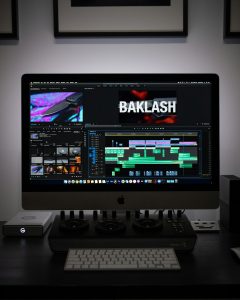The internet is filled with acronyms and abbreviations, but few have seen as much popularity and evolution in meaning as PFP. Depending on the context, PFP can signify different things—from a simple social media feature to complex digital trends like NFTs. In this article, we’ll dive into the full meaning of “PFP,” explore its various uses online, and understand why it has become such a relevant term in digital culture.
What Does “PFP” Stand For?
The most common and widely recognized definition of PFP is Profile Picture. On platforms like Twitter, Facebook, Instagram, and TikTok, the profile picture is the small image that represents a user. It’s the visual ID tag that people see first when they view your profile or content, and often plays a key role in defining your digital identity.
However, PFP has several alternative meanings, especially depending on where and how it’s used. Here are a few interpretations:
- Profile Picture – as mentioned, this is the most common use.
- Picture for Proof – a phrase used in online trading or sales communities to request an image that verifies something.
- Pay for Promotion – a term used in influencer marketing and online business, where someone is paid to promote content or products.
- Partner for Partner – sometimes used on YouTube or Instagram to suggest a mutual promotional collaboration between users.
The Rise of PFP in Digital Culture
While PFP has long referred to profile pictures, the term has gained new life and significance in the era of NFTs (non-fungible tokens) and Web3. In this space, a PFP NFT refers to a unique digital avatar or collectible image that is often used as one’s identity in decentralized platforms or crypto-based social networks.
Projects like CryptoPunks and Bored Ape Yacht Club have turned simple images into multi-million dollar digital assets that serve not only as profile pictures but also as status symbols, memberships, and branding icons.
These PFP NFTs go beyond simple images—they become portable digital identities that users can carry across different platforms. Owners of these images often use them for online branding, community involvement, and even as access passes to exclusive events and experiences.
Why Your PFP Matters
The profile picture you choose plays a crucial role in how people perceive you online. Whether you’re building a personal brand, joining a professional network, or simply engaging in a social community, your PFP is rarely just a picture—it’s representation.
Some of the key roles a PFP can play include:
- First Impression: Your PFP is often the first thing others notice about your online presence. A well-chosen image can communicate personality, professionalism, or creativity.
- Digital Identity: In the growing digital economy, especially in gaming, social tokens, and NFTs, your PFP can be symbolic of your niche, values, or tribe.
- Consistency Across Platforms: Many people use the same PFP across different networks to maintain a cohesive and recognizable brand.
Think about how celebrities, influencers, or even corporations maintain consistent visuals across their platforms. It’s not accidental—it’s strategic.
PFP Trends and Personalization
In a constantly evolving digital space, PFPs are becoming increasingly creative. Here are some popular trends that have emerged:
- Cartoon and anime-style avatars that reflect users’ favorite genres or personal interests.
- AI-generated portraits that add a futuristic and artistic flair.
- Dynamic PFPs, including GIFs and videos on platforms that support them, like Discord or Twitter Blue.
- PFPs with custom filters or overlays used to support social causes, movements, or holidays.
These styles not only allow users to express creativity but also engage and connect with communities who share similar aesthetics, values, or fandoms.
The Bottom Line
In summary, the term PFP encompasses more than meets the eye. It may have started as a simple abbreviation for Profile Picture, but it has since grown to represent broader concepts in identity, digital culture, and even internet economy. Whether you’re setting up a professional LinkedIn image or purchasing a rare NFT as your avatar, your PFP says a lot about who you are in the digital world.
So the next time someone asks about your PFP, remember it’s not just a picture—it’s a statement.






